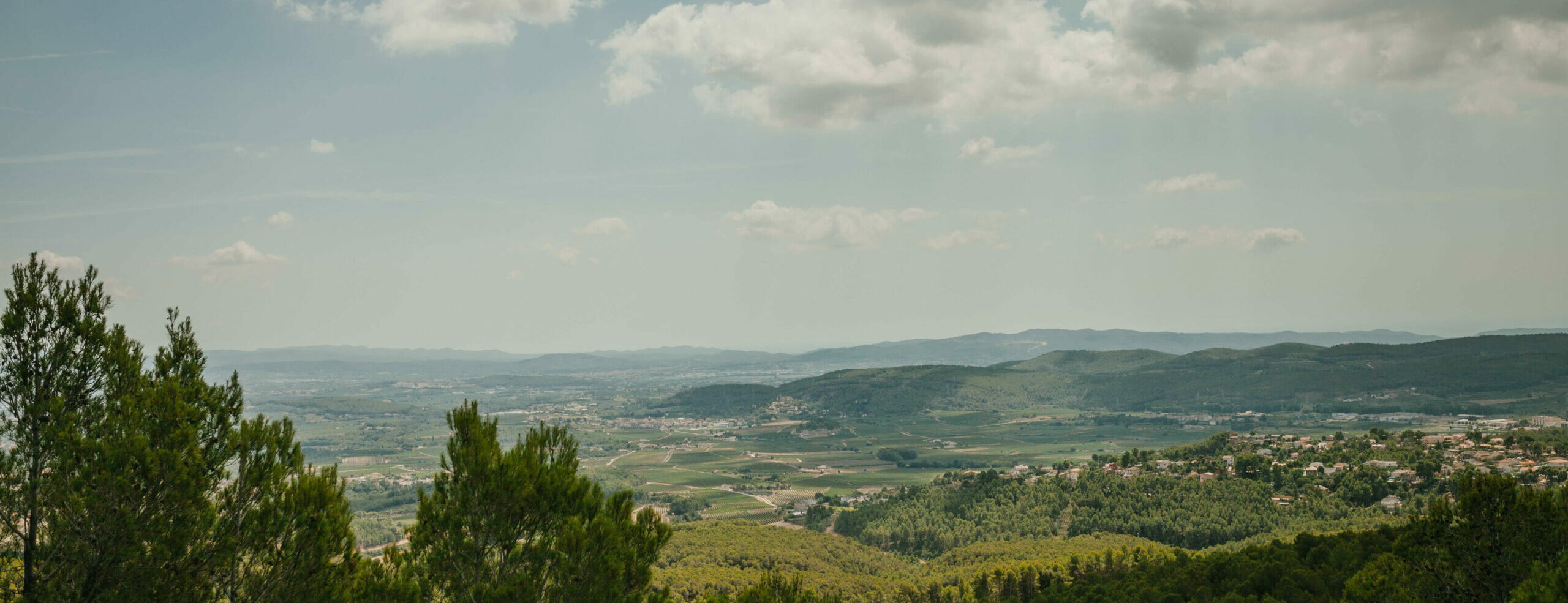At Parés Baltà, each vintage is a new challenge, a new climatic landscape that our vines interpret with wisdom. The 2024–2025 growing season has been marked by contrasts: periods of generous rainfall, historic heatwaves, hailstorms and summer thunderstorms, and moments of disease pressure in the vineyard. A year that, as always, we have experienced with our feet close to the earth and through a biodynamic lens.
Autumn 2024 arrived full of hope. More than 170 litres per square metre were recorded in October – an exceptional amount that helped refill the aquifers and allowed the vines to enter dormancy with solid reserves of water and energy. November and December continued along the same lines, with mild temperatures and moderate rainfall.
Winter was warm and inconsistent. January and February saw average temperatures around 9°C, but very little rain in January and only a slight recovery in February. This lack of accumulated cold and winter dryness generated uncertainty about the proper development of the vines in the early stages of the growing cycle.
Spring 2025 was especially kind. Rain fell gradually and consistently, with no extreme events, allowing the soil to absorb water efficiently. The combination of regular precipitation, cool temperatures and wind created ideal conditions for vine growth. However, this context also favoured the development of downy mildew, making early action essential. Thanks to organic preventive treatments and the use of natural preparations such as horsetail infusion, we were able to keep the vineyard’s health under control.
As part of our biodynamic farming, we also reinforced the natural treatments — like horsetail infusion — a vital ally to protect the vines in a respectful way.
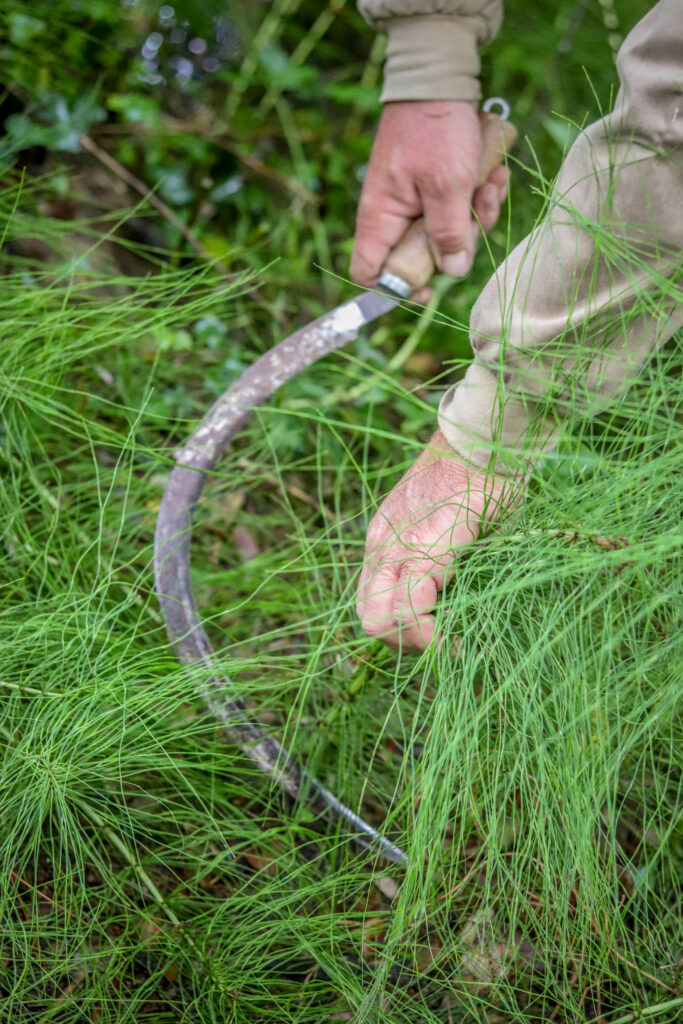
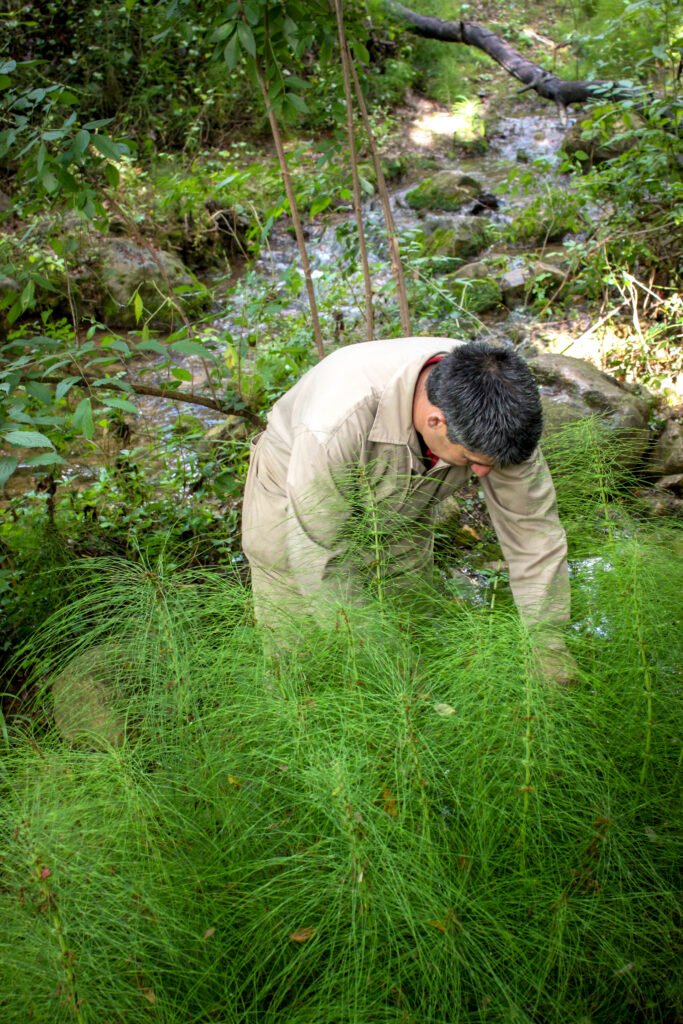
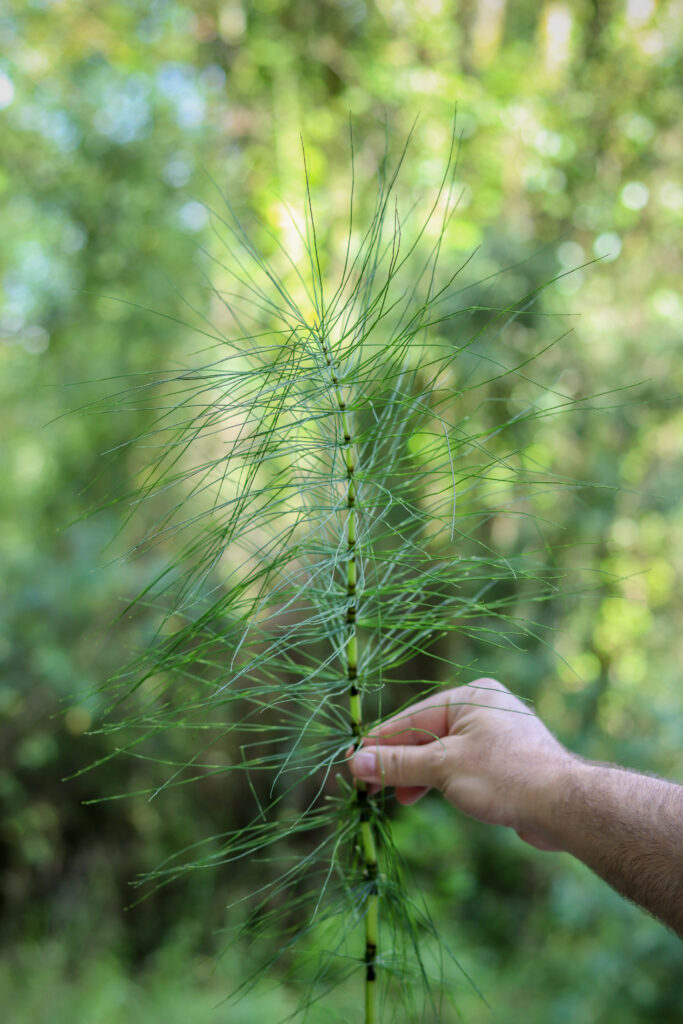
June was extreme. The average temperature was 24.9°C and there was practically no rainfall. According to Meteocat, it was the hottest June on record in Catalonia in the past 125 years. Records were broken in many areas, including the Garraf Natural Park, very close to our vineyards. This heatwave, combined with drought, pushed the vines to their limits. Fortunately, the good reserves accumulated between October and March helped mitigate the most severe effects of water stress.
July arrived with sudden changes. From the 8th onwards, temperatures dropped and the rain returned, with measurements between 12 and 25 litres per square metre depending on the vineyard. But during the weekend of July 12th, a DANA storm system hit many parts of Catalonia hard. In the Penedès and Garraf, storms left between 75 and 150 litres per square metre — and in some cases, hail.
We were lucky. Of the five estates we manage — Les Valls–Les Torres, Els Pujols, Parés Baltà, Can Miret and La Torreta — only three plots in Els Pujols were affected: Chardonnay destined for cava, Syrah for Radix, and white Carignan for Satèl·lit. In all of them, we have begun applying natural treatments to heal the wounds caused by the hail, promote recovery and prevent infection by downy mildew.
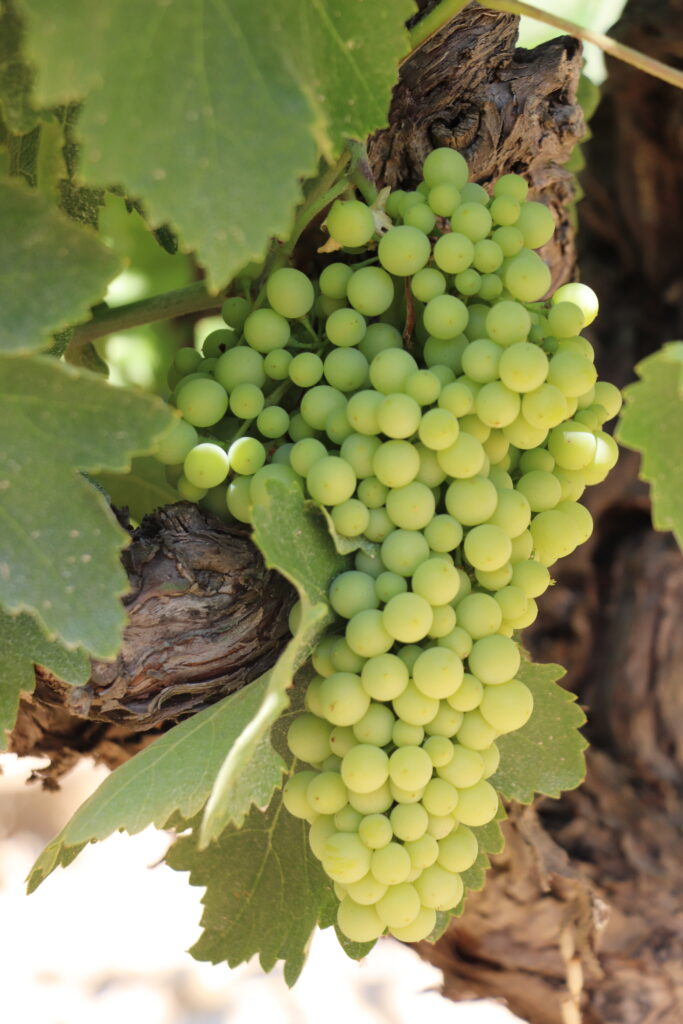
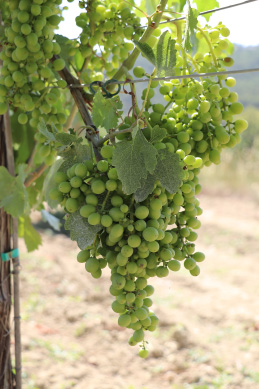
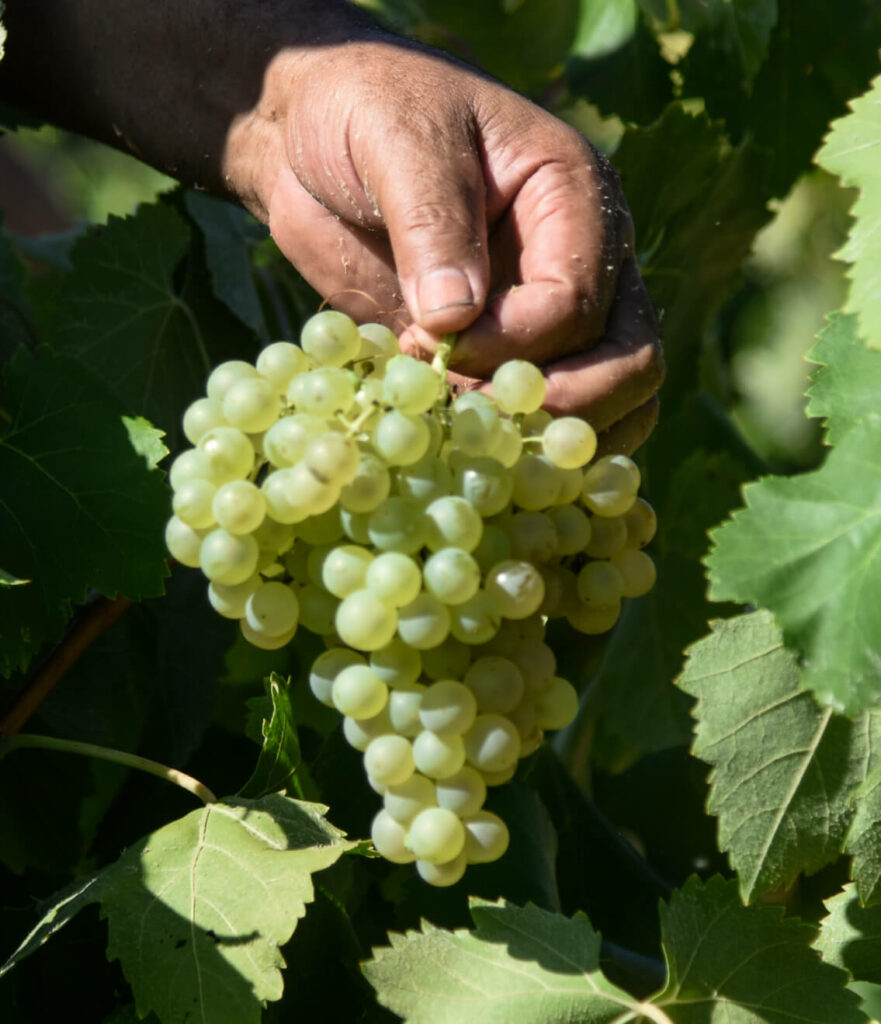
The diversity of microclimates and altitudes — from 150 to 800 metres — has led to very different responses to the rainfall depending on the terrain. Soils with rounded stones and good drainage capacity managed the water well. Clay soils, more compact and impermeable, retained more moisture.
Once again, we’ve seen the value of cover crops. In the vineyards where the vegetation is well established, access remained easy: no erosion, no gullies, no waterlogging. In a year when the drought gave us a break, the cover crop proved to be a powerful ally for protecting the soil and preserving its structure.
Despite the rain and hail episode, grape ripening is progressing at a good pace and, unlike 2024, the harvest does not appear to be moving forward. Last year, we started picking on August 6th — the earliest harvest in Parés Baltà’s history. This year, everything suggests we’ll return to a more traditional schedule, though still far from the late August dates of 30 years ago.
The balance of the 2024–2025 cycle reflects a vintage full of contrasts. A wet and promising start, an unstable winter, a perfect spring and a summer kickoff marked by thermal stress — and in July, by an intense episode of rain and hail. It’s still too early for firm predictions, but if summer continues in the pattern of earlier decades, we could be looking at a vintage with good aromatic concentration, freshness and complexity. Spring rainfall, sustained natural acidity and the resilience of the vine could be key.
Over the last 13 years, since we began farming our vineyards biodynamically, we’ve paid close attention to the position of the planets through astronometereology.* Between 2015 and 2024, the planetary configuration was mostly aligned with constellations associated with warmth and light. But from 2025 onwards — and based on forecasts through 2027 — the planets begin to align more frequently with constellations linked to earth and water. This points to a transitional period, beginning in summer 2025, toward milder years, though with more frequent storms. Just as we did during the heat-driven cycle of previous years, we will continue to observe how this new phase evolves — and how our vineyards adapt to it.
At Parés Baltà, we continue to work with respect, observing the vineyard, trusting in biodiversity and adapting to the climate challenges of the Penedès. As always, with our eyes on the sky and our feet firmly rooted in the earth.
* according to the Maria Thun calendar
Please, feel free to ask any question you may have by this channel or by email to club@paresbalta.com
See you soon!
